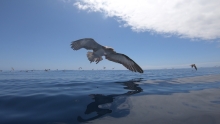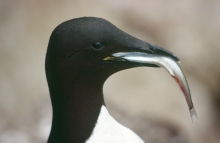Scientists have been worried about the potential harms of microplastics for years. These small plastic particles less than 5 mm in length have been found everywhere because of plastic pollution – from the Earth’s deep oceans to remote regions in Antarctica, and even the seafood we eat. But, are microplastics really harmful?


The Arctic is warming at approximately twice the global rate. A new study led by researchers from McGill University finds that cold-adapted Arctic species, like the thick-billed murre, are especially vulnerable to heat stress caused by climate change.
“We discovered that murres have the lowest cooling efficiency ever reported in birds, which means they have an extremely poor ability to dissipate or lose heat,” says lead author Emily Choy, a Postdoctoral Fellow in the Natural Resource Sciences Department at McGill University.

For 47 years, biologists have plucked eggs from seabird nests along the British Columbia coast. Many of the eggs were collected from remote rocky islands surrounded by some of the world’s roughest seas.
In all, they collected 537 eggs from six species, including ancient murrelets, rhinoceros auklets and double-crested cormorants. Now these eggs are revealing new information about the way mercury finds its way into the ecosystem.
